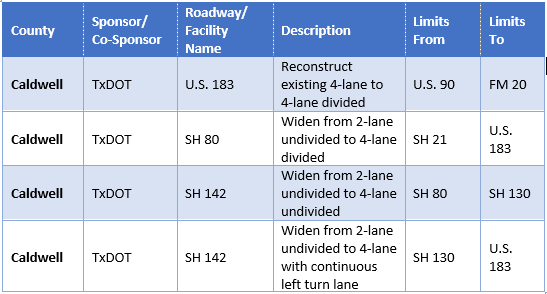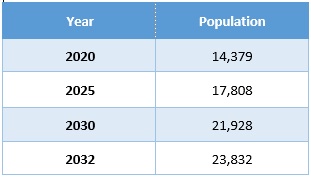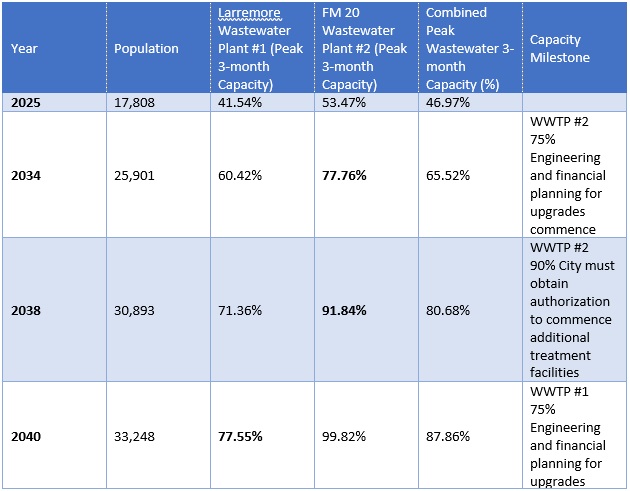2045 CAMPO Regional Transportation Plan: Every five years, metropolitan planning organizations are required by federal law to adopt a long-range transportation plan, commonly known as the Regional Transportation Plan (RTP). The CAMPO 2045 Transportation Plan was adopted May 4, 2020. Highlights include:
- SH 142, from U.S. 183 to SH 80, is on the unconstrained list in the CAMPO 2045, which means that there is no funding at this time to work on this project.
- However, TxDOT officials partner with communities to make short-term improvements to alleviate bottlenecks on identified state road segments.
- Caldwell County projects included in the 2045 CAMPO Regional Transportation Plan:

- Western Caldwell County Transportation Plan:
- SH 142: Proposed 4-lane rural divided roadway
- CR 238: Proposed 4-lane rural divided roadway
- FM 2720: FM 2720 is under consideration for widening/improvements to a 4-lane divided highway with a continuous left turn lane and shoulders on both sides from SH 21 to approximately 500 feet south of Buda Court. From 500 feet south of Buda Court to SH 142, FM 2720 will be improved to a 4-lane divided roadway with a 30’ grass median with cable barrier, paved shoulders.
- Funding is only available for the feasibility stage at this time.
SH 142 Truck Re-route: Lockhart’s Downtown Revitalization Project’s traffic study found that truck traffic consisted of 30% of vehicle traffic on SH 142/W. San Antonio St. The City recently enacted an ordinance establishing and regulating a truck route to preserve and protect functionality of State Highway 142, the City’s historic central business district and neighboring residential properties. Following the installation of new signage on SH 183 and 130, the new regulations will become effective.
CITY WATER AND SEWER UTILITIES
Projected Future Population: Population trends for Lockhart were conservatively estimated using a 4.25% growth factor year-over-year.

Water:
- Water Storage Capacity: The Texas Commission on Environmental Quality (TCEQ) regulates the amount of elevated water storage capacity necessary to serve water customers.
- Water Supply and Treatment Capacity: The TCEQ regulated the amount of supply capacity systems.
- Wastewater Treatment Capacity: The TCEQ is the issuing body for wastewater treatment plant discharge permits and also enforces the rule that determines when plant upgrades are necessary. This rule is known as the “75/90 rule.”
Elevated Water Storage Capacity (MG): The City’s current elevated storage capacity is 1.55 million gallons (MG)—which is projected to be reached in 2031.
Current and Projected Water Supply Capacity: Based on Lockhart’s projected population growth and average peak water usage, the City’s high service pump capacity is expected to reach its maximum of 5.18 million gallons per day (MGD) in 2025, which represents the high service pumping capacity with the largest pump out of service. With all pumps operational, the pumping capacity will be 6.9 MGD. As previously planned, the City will be letting a construction contract for high service pump expansion project in December 2022 that will increase water distribution into the system.
Sewer:
Current and Projected Wastewater Treatment Plants Capacity:

The City of Lockhart has had the foresight to improve its infrastructure to meet the anticipated population growth and exceed TCEQ capacity requirements for water storage capacity to 2031, water supply capacity (with the proposed capital improvements) to 2025, and wastewater capacity at the FM 20 plant until 2034 and the Larremore plant until 2040.
The City will continue to monitor population growth projections as it relates to its water and sewer capacities. It will take the appropriate steps as needed to increase its water storage, water supply, and wastewater treatment capacities as required by the TCEQ regulations. Current system growth has demonstrated that master planning studies should be considered to model the existing system capabilities and to project growth requirements.
IMPACT FEES
Impact Fees: New development should pay for the cost of public infrastructure required to serve it. Lockhart’s Impact Fee regulations were adopted in 2002.
- What can impact fees pay for? Capital cost only to implement facilities for water, wastewater, and roads.
- What can impact fees not pay for? Upgrading, updating, expanding, or replacing existing capital improvements that serve existing development (where there is no new development).
- Considerations for water/wastewater impact fees:
- Eligible items:
- Master planning studies/hydraulic modeling related to system growth.
- New or expanded pipelines and facilities (pump stations, storage tanks, treatment plants, etc.)
NEXT STEPS
Prior to adjourning the workshop, City Council and the Planning and Zoning Commission agreed to schedule a second workshop on Thursday, January 12, 2023, at 6:30 p.m. at the City Council Chambers. The following topics will be discussed:
- Land Use Assumptions
- Future Land Use Planning
- Balance of Land Uses
- Housing
- Zoning Policy
- Economic Impact of Developments
- Comprehensive Plan Preparation
For additional questions, contact the Public Works Director, Sean Kelley, skelley@lockhart-tx.org, or Public Information Officer, Victoria Maranan, vmaranan@lockhart-tx.org.
ATTENTION: This is a recap of the highlights of the joint work session on December 13, 2022. The complete agenda can be found by visiting: City of Lockhart (windows.net).